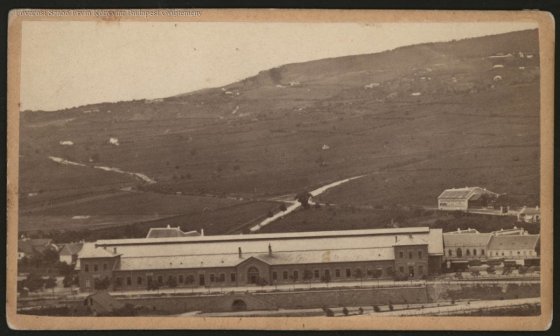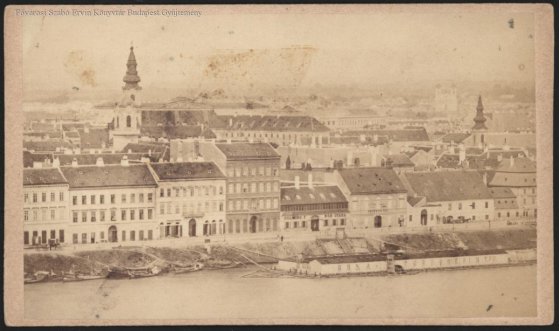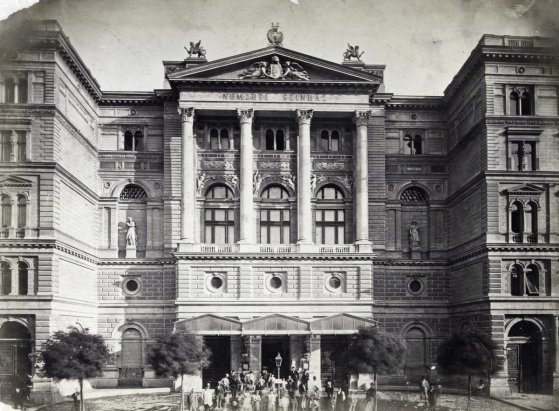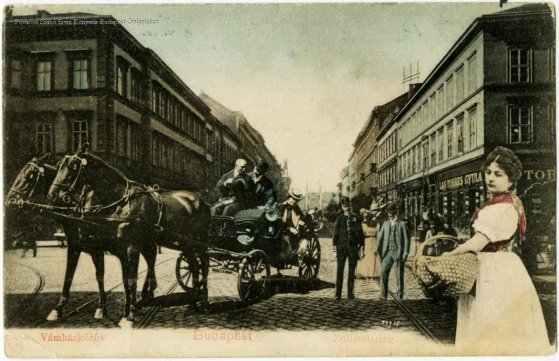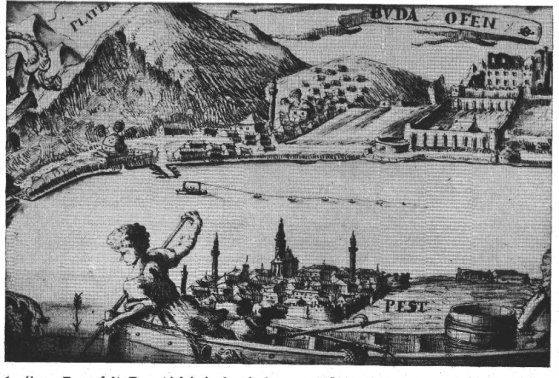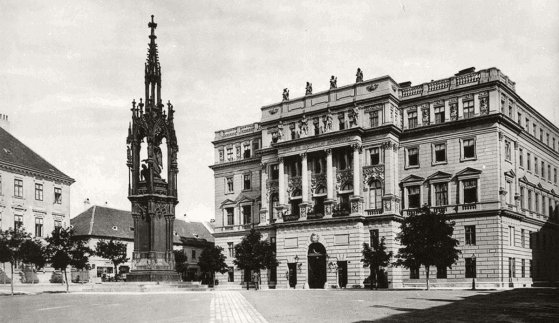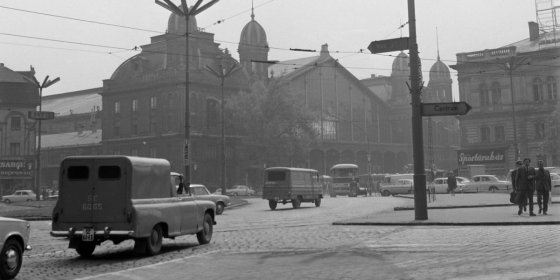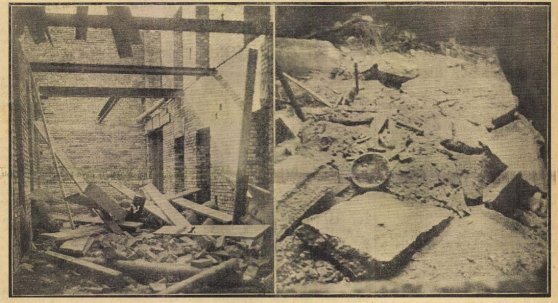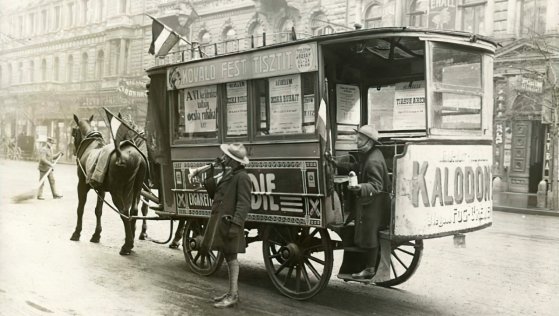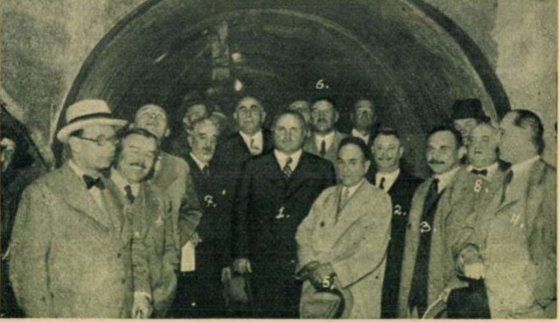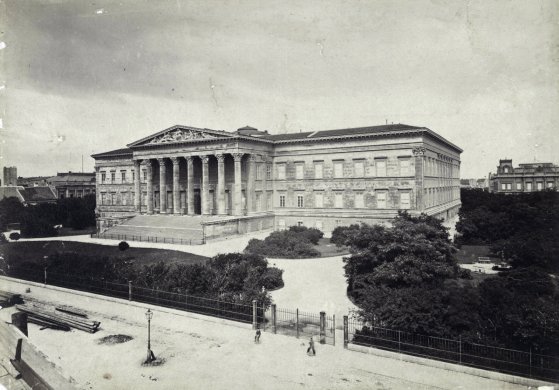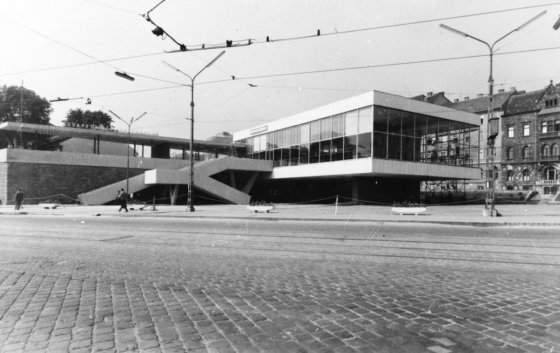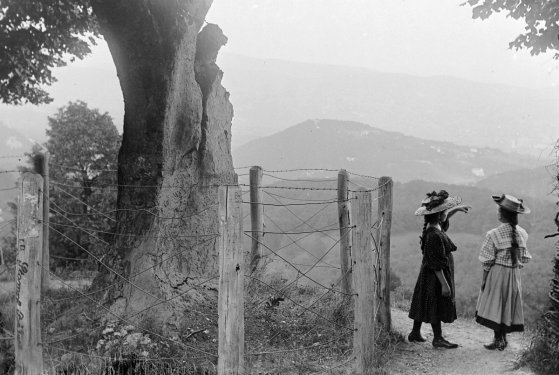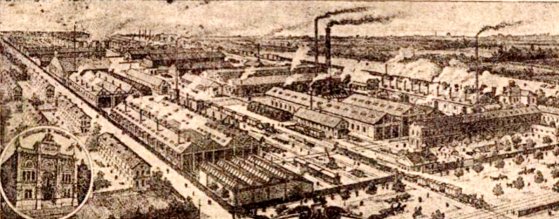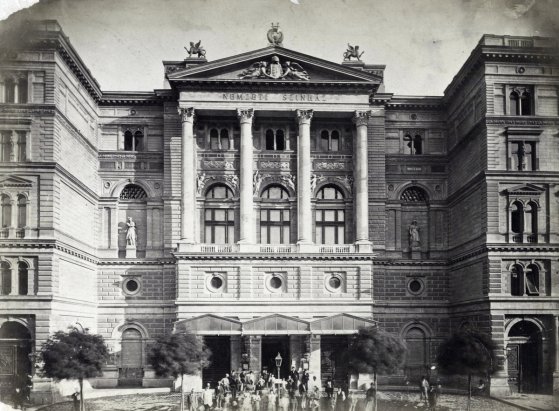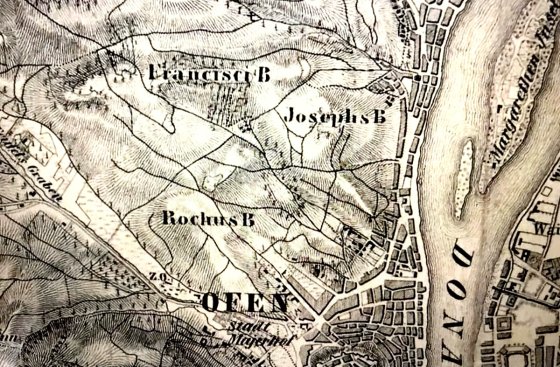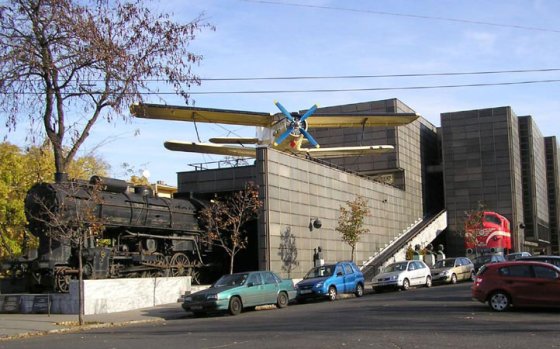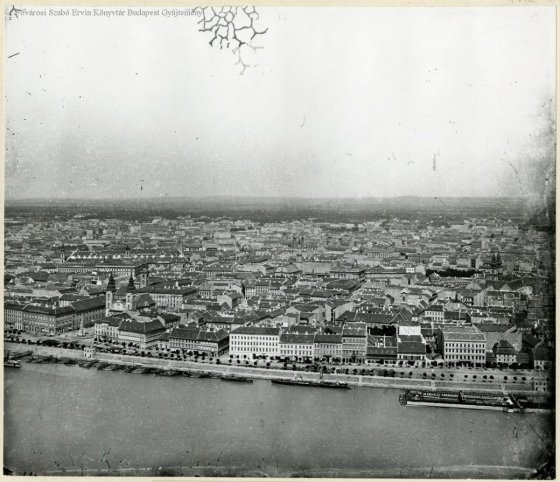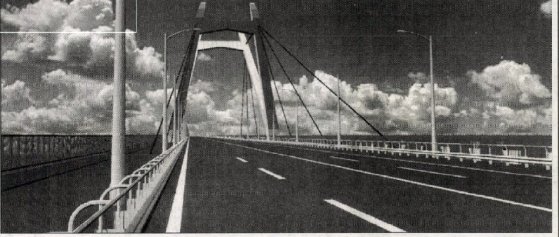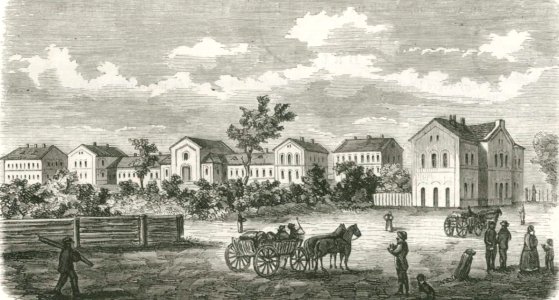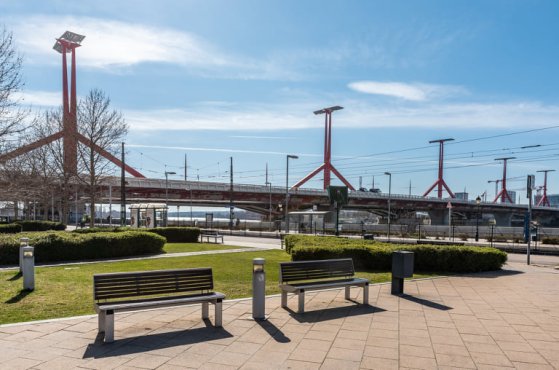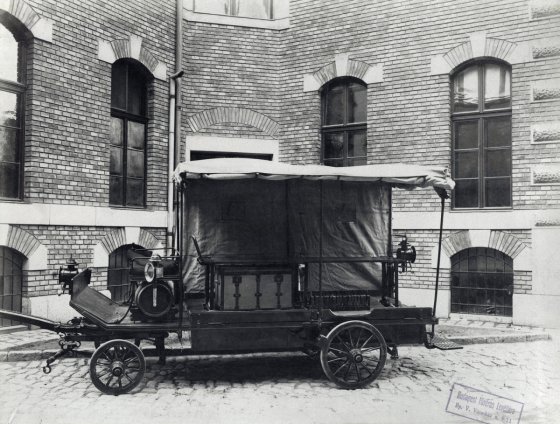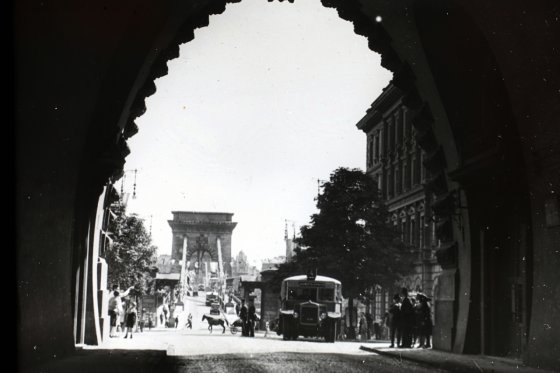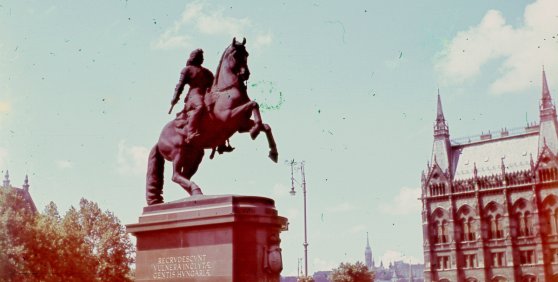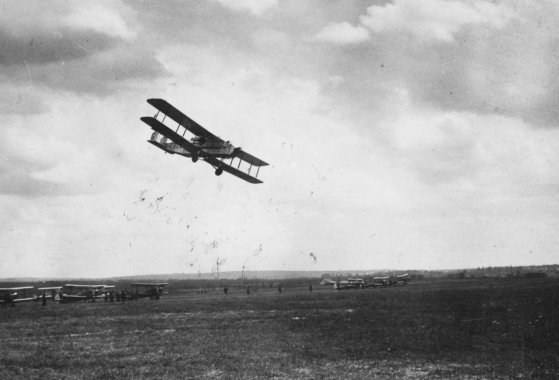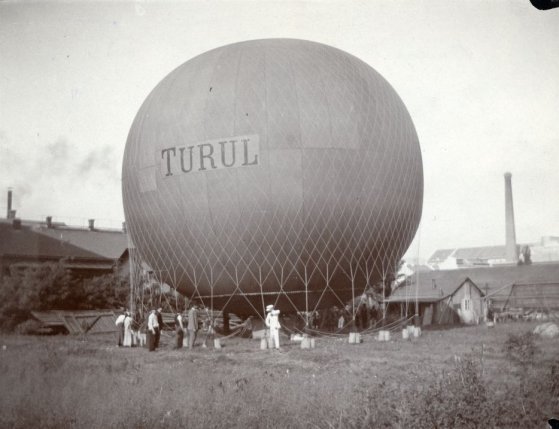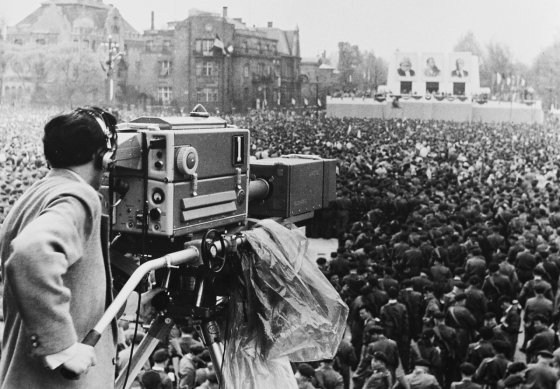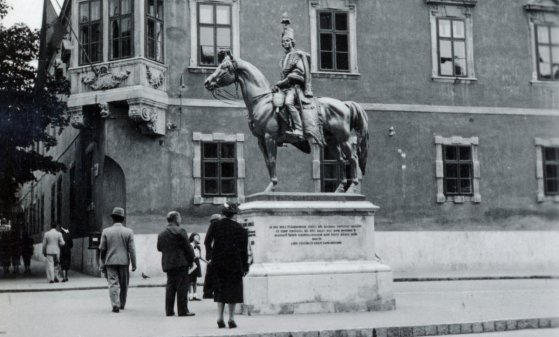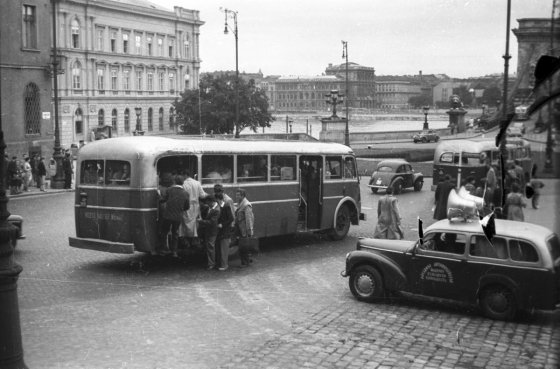 The „intertwined history” of the bridges and the city of Budapest
Which ideas and events have shaped the fate of bridges of Budapest and the cityscape? Alongside many other interesting facts, this question is also answered this newly published book by the Budapest City Archives, which introduces the history of bridges in Budapest.
The „intertwined history” of the bridges and the city of Budapest
Which ideas and events have shaped the fate of bridges of Budapest and the cityscape? Alongside many other interesting facts, this question is also answered this newly published book by the Budapest City Archives, which introduces the history of bridges in Budapest.
Csaba Domonkos
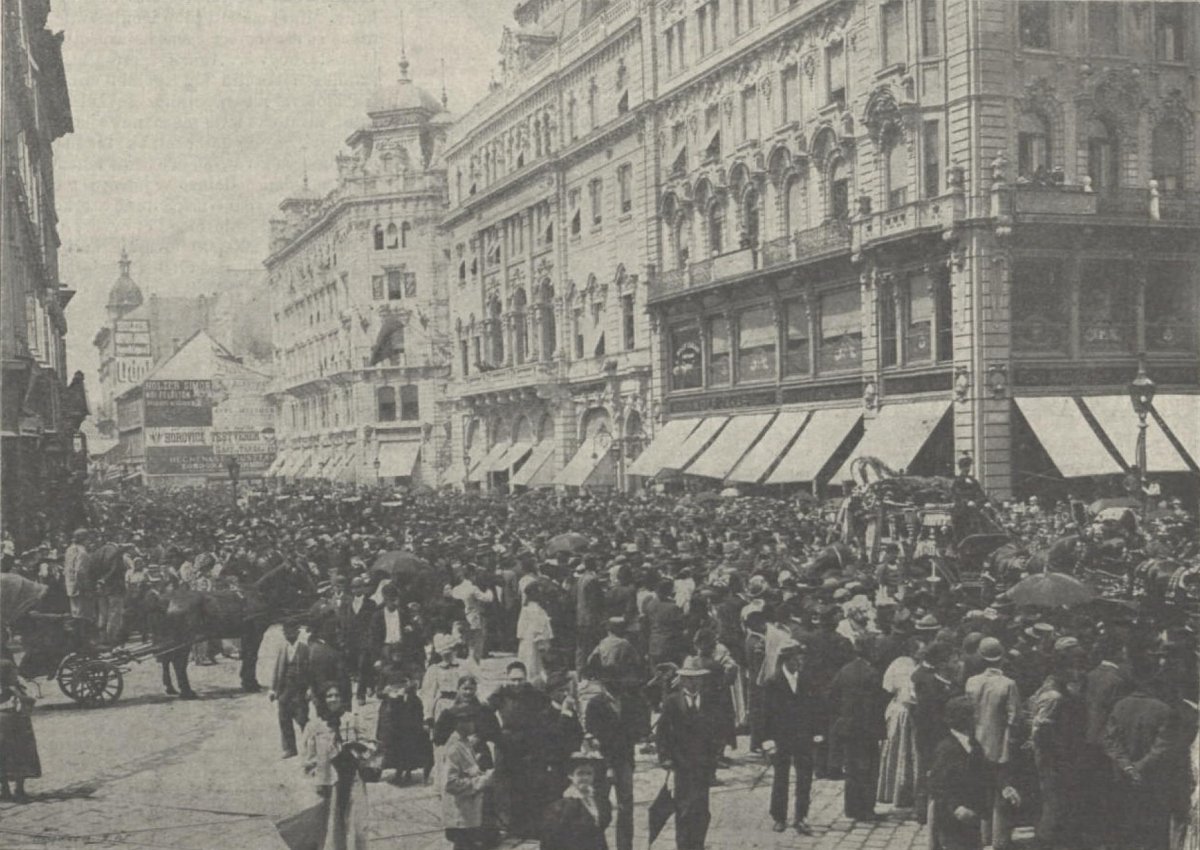 The first lord mayor of Budapest died 125 years ago
The first lord mayor of Budapest died 125 years ago
July 30, 2022 at 11:00 AM
Károly Ráth was the lord mayor of Budapest from the time of the unification of the city, in 1873, and he was re-elected a total of four times. He held this post in the quarter century when the Hungarian capital developed into a metropolis. He witnessed the construction of Andrássy Avenue and Outer Ring Road, and saw how Budapest's famous buildings, public institutions, schools, and hospitals were constructed. He even took part in the millennium celebrations and died as mayor 125 years ago, on 30 July 1897.
By train to Pest and Buda - Until the Compromise, only private railways operated in the country
July 28, 2022 at 9:00 AM
Today, it is natural to get on the train or plane and get anywhere in the world from Budapest. However, it was quite different a century and a half ago. Let's see where someone could travel from Pest or Buda by train 155 years ago, in the year of the Compromise!
The last year of Pest's independence - Only 34 four-story houses stood in the city before unification
July 22, 2022 at 11:00 AM
Three small towns stood on the banks of the Danube 150 years ago. The largest of the settlements was Pest on the left bank, which already had almost 5,700 buildings. Budapest existed only in plans and legislation, but Pest was constantly being built and developed. In 1872, the last independent year before the unification of the city, 206 new residential buildings were handed over, but the fact that 28 stables were also built in the same year clearly shows the way of life and transport options of the time.
A 190-year-old proposal to create a permanent Hungarian theatre
July 21, 2022 at 1:30 PM
The first permanent Hungarian-language theatre opened in Pest in August 1837, making a nearly 40-year-old dream come true. The construction of the theatre was given a big boost by a work five years earlier, which put a detailed and thorough proposal on the table on how to establish a Hungarian theatre and ensure its operation in the long term. Its creator was István Széchenyi, who already called the Hungarian capital Buda-pest in 1832.
When the coachmen were regulated in Budapest
July 16, 2022 at 2:00 PM
A smaller war broke out between the Budapest police headquarters and the coachmen 105 years ago, in 1917. Due to the many abuses and irregularities, the captain wanted to bring this type of transport service under the rules, for which the coachmen threatened to go on strike.
The reaction ferry between Pest and Buda ceased to exist 255 years ago - The current of the river operated the special ferry
July 14, 2022 at 10:30 AM
The first post-Turkish bridge was built between Buda and Pest 255 years ago, but until then, people still had to cross the river somehow. This was made possible by a very interesting structure called the reaction ferry. It was operated by the flow of the river, and it solved the crossing of the Danube in the line of today's Erzsébet Bridge and then the Chain Bridge until 1767.
A publicly hated monument in the Castle - The Hentzi "pillar of shame" was inaugurated 170 years ago
July 11, 2022 at 1:00 PM
There have been many monuments and buildings and there are ones still standing in Budapest that remind us of the former occupiers and glorify those who committed crimes against Hungarians. The largest of these is the Citadel, which was built by the Austrian army, specifically for the purpose of threatening the population of Pest and Buda. And a monument in Buda Castle was erected to a man who unjustifiably shot at the city of Pest and its citizens in 1849. The Hentzi Memorial was inaugurated exactly 170 years ago, on 11 July 1852, by Franz Joseph, who defeated the Hungarian war of independence.
Bridge over Marx Square - Fifty years ago, the environment of the Nyugati Railway Station was imagined this way
July 8, 2022 at 11:00 AM
The design competition for the arrangement of the area around the Nyugati railway station was closed a few months ago. In the new ideas, a more livable, greener railway station environment and Nyugati Square were outlined, and the road overpass crossing the square was no longer considered. Fifty years ago, however, the future of the railway station was imagined quite differently. The results of the design competition at the time were announced in the press on 8 July 1972.
Tragic house collapses in Budapest
July 3, 2022 at 1:30 PM
Unfortunately, in the last 150 years, it has happened many times in Budapest that during construction or demolition, a house collapsed, a wall fell, the slab cracked, or a tragic accident was caused by the collapse of the scaffolding. The newspapers of the time regularly reported on these misfortunes. In our compilation, we present a selection of the most egregious cases and minor mishaps.
The first horse-drawn omnibus started in Pest 190 years ago - These carriages travelled the streets of the capital for nearly a hundred years
July 1, 2022 at 9:00 AM
The first omnibus, i.e., horsebus, started in Pest on 1 July 1832. It connected two coffee houses, one was in the City Park, the other in the City Centre, the main goal of the business was to increase the turnover of the City Park coffee house. Omnibuses were part of the Budapest street scene for nearly a hundred years.
The drilling of the first tunnel under the Danube began 90 years ago
June 27, 2022 at 10:00 AM
It was an old dream to build a tunnel between Pest and Buda under the Danube, the idea already stirred the imagination of designers in the 19th century. But the first such construction took place only in the 1930s, namely on the northern border of Budapest, at the Szentendrei Island. This tunnel was not yet used for traffic, because water pipes were laid through it. Drilling began ninety years ago.
The construction of the National Museum began in 185 years
June 24, 2022 at 2:00 PM
The construction of the Hungarian National Museum began 185 years ago. Alfalfa was previously grown on the then suburban plot, which had already been purchased for the museum in 1813. The Parliament voted for a huge amount of 500,000 HUF for the construction, and it began on 22 June 1837.
The first “modern Déli” was built 60 years ago, but we can no longer see it today
June 22, 2022 at 9:00 AM
The Déli Pályaudvar [Southern Railway Station] has been serving rail traffic since 1861. The current one is its third station building since its opening. The most interesting was probably the second building, which was handed over 60 years ago, in 1962, and which stood in its original form for barely 13 years. We remember this first “modern Déli”.
Ninety-five years ago, Normafa fell down - they tried to save it for decades
June 19, 2022 at 1:00 PM
95 years ago, hikers in Buda surprisedly found on Svábhegy that their favourite, century-old tree had disappeared overnight. The excursion place without the beech tree called Normafa from 19 June 1927 was no longer the same as before.
András Mechwart, who made the Ganz Factory great, passed away 115 years ago
June 17, 2022 at 11:30 AM
András Mechwart died 115 years ago, and he created the Ganz Factory, a company that has defined Hungarian industry for decades, from a company of a few hundred people. Originally, the main factory was located in Buda, in the area between today's Bem József Street and Ganz Street, from where it expanded to Kacsa Street, Fény Street, and then to its Pest sites. The memory of the factory is preserved today by the Ábrahám Ganz Foundry Collection at 20 Bem József Street, and posterity pays tribute to András Mechwart with the 2nd District square named after him and the bust shown here.
The National Theatre in Pest was the third theatre in the world equipped with electric lighting
June 15, 2022 at 11:00 AM
The first National Theatre, built in 1837, stood on today's Astoria, on the corner of Rákóczi Road - Múzeum Boulevard. The facade of the classicist building was completely rebuilt in 1875, and a huge residential house was built next to it. A few years later, the audience in Pest could witnessed something that was given to a few at the time: the introduction of electric lighting. With this, the National became the third theatre in the world, whose stage, auditorium and facade were illuminated in this way.
When the hills of Buda were given Hungarian names - the dűlőkeresztelő [ridge baptism] was 175 years ago
June 11, 2022 at 10:00 AM
Do you know where the Burgerberg or the Feldhut or the Reiche Reid are in Buda? In fact, when they say they have to travel to Dreihotter, no one thinks of getting on bus 21. Today, the districts of Buda bear beautiful, sonorous and sometimes ancient sounding Hungarian names, but this has only been the case since 1847, when almost every area of Buda was renamed in one fell swoop. It was the famous dűlőkeresztelő [ridge baptism].
Thirty-five years ago, the newly built wing of the Museum of Transport was handed over
June 6, 2022 at 11:00 AM
A major event in the life of the Museum of Transport took place 35 years ago, after 8 years of construction, the new wing of the building was handed over. Although the museum's severe lack of space was alleviated, the new wing, which was modern in the era, did not solve all the problems.
A plan made 150 years ago for the development of Pest - A special drawing of the Eskü Square Bridge
June 5, 2022 at 9:30 AM
150 years ago, there was no unified Budapest, but there was already a unified plan for the development of the future capital.
Can the Aquincum Bridge be car-free? - Only after the construction of the next section of the M0 will there be a new Danube bridge between Óbuda and Újpest
May 21, 2022 at 1:00 PM
Once again, the issue of the Aquincum Bridge is on the agenda, and the capital is asking the public for their opinion on what the new Danube crossing should look like and between which areas should it create transport connections. Although its construction is not expected in the near future, as it is conditional on the construction of the section of the M0 motorway between roads 10 and 11, and it is also preceded by the Galvani Bridge, but a suggestion has already been debated: alternatives include a plan of a car-free bridge.
Trains departing from the 155-year-old Józsefváros railway station connected Losonc to Budapest
May 19, 2022 at 1:00 PM
The Józsefváros railway station, the third of Budapest's railway stations, was originally built for a private railway that later went bankrupt. The company was taken over by the state, and this decision brought about significant changes in Hungarian transport policy.
Plans were already made for today's Rákóczi Bridge 50 years ago
May 15, 2022 at 9:00 AM
A bridge was designed in the 1970s to replace the former Lágymányosi, now Rákóczi Bridge, and a tender was also announced for the task. The winning plan would have been a concrete bridge, but ideas later changed about both the structure and the role of the bridge, so it was finally built only decades later, in a completely different form. The results of the first competition were presented to the general public 50 years ago, in May 1972.
We can count on paramedics in Budapest for 135 years - The first ambulances were still drawn by horses
May 10, 2022 at 9:00 AM
We can count on the help of paramedics in Budapest for 135 years now. The Budapest Volunteer Ambulance Association started its operation on 10 May 1887 in today's Szent István Square, but soon after, they were able to move into their new headquarters on Markó Street. The paramedics initially rode in horse-drawn carriages, but in 1902, 120 years ago, they already rushed in an electric car to help those in trouble.
The first Zero Kilometre Stone was placed in Clark Ádám Square 90 years ago
May 7, 2022 at 10:00 AM
All roads lead to the Chain Bridge. This saying is true in that the length of the main roads starting from Budapest is calculated in kilometres from here, the Chain Bridge, more precisely from Clark Ádám Square on the Buda side. To mark this, the first 0-kilometre stone was inaugurated here on 7 May 1932, 90 years ago.
The statue of Ferenc Rákóczi II was unveiled in Kossuth Square 85 years ago
May 5, 2022 at 11:00 AM
The statue of Ferenc Rákóczi II has been standing on Kossuth Square for 85 years now. Its erection was decided on the 200th anniversary of his death, and two years later, in 1937, the statue stood. Since then, only the inscriptions have been changed, sometimes for political or grammatical reasons.
We have been able to fly abroad from Budapest as a passenger for a hundred years
May 3, 2022 at 11:00 AM
Today, we take it for granted to buy a plane ticket and simply get on the plane. Few think about since when we can do this. And now we are celebrating an anniversary: our predecessors were first able to board a passenger plane in Budapest 100 years ago. Since then, the industry and tourism have also undergone tremendous development: almost 16 million passengers turned up at Liszt Ferenc Airport in the year before the epidemic.
With a balloon over Budapest - the Turul took off 120 years ago
May 1, 2022 at 10:00 AM
The hot air balloon lookout opened in Városliget is not the first such contraption in Budapest: it was already possible to rise above the city with a balloon at the millennium exhibition. However, the balloon, Turul, launched 120 years ago on 1 May 1902, was not intended to entertain the public, but to do research. In addition to meteorological observations,we can also thank it for a number of aerial photographs, which show how Budapest looked from above at the beginning of the 20th century.
The first official program was broadcast by Hungarian Television 65 years ago
April 30, 2022 at 9:00 AM
Television is nearly a hundred-year-old invention that many Hungarian researchers worked on in the beginning. In Hungary, however, work began only in the 1950s to enable Hungarian broadcasting in Hungarian households. The experimental broadcasts started in 1956, and after the revolution, on the evening of 26 April 1957, a film was shown on television, but the first "official" broadcast, the Heroes' Square parade, was broadcast by the Hungarian Television only on 1 May 1957, for political reasons.
The equestrian statue of András Hadik was unveiled in the Buda Castle 85 years ago
April 28, 2022 at 9:00 AM
The work of the sculptor György Vastagh Jr., who also made the Csikós statue, was unveiled in 1937 in the small square at the intersection of Úri Street and Szentháromság Street in the presence of the country's leaders at the time. The statue commemorating the former warlord of the Habsburg Empire, András Hadik and the 3rd Hussar Regiment, has been associated with a strange custom among graduating students of the Műegyetem (Budapest University of Technology) since the 1950s.
Sixty years ago, Budapest was at a crossroads - the transport of the capital in the 1960s
April 23, 2022 at 2:00 PM
Budapest's traffic was at a crossroads 60 years ago as well as now. Experts sought answers to questions about how much the then outdated public transport network needs to be developed and how to prepare the city for the expected car traffic. Studies have also helped to make these decisions. Based on a work published 60 years ago, we present the transport dilemmas of Budapest at that time.
More articles
 The „intertwined history” of the bridges and the city of Budapest
Which ideas and events have shaped the fate of bridges of Budapest and the cityscape? Alongside many other interesting facts, this question is also answered this newly published book by the Budapest City Archives, which introduces the history of bridges in Budapest.
The „intertwined history” of the bridges and the city of Budapest
Which ideas and events have shaped the fate of bridges of Budapest and the cityscape? Alongside many other interesting facts, this question is also answered this newly published book by the Budapest City Archives, which introduces the history of bridges in Budapest.
 The Bridge Report, which brought a turning point in the history of Budapest
A travel report that changed the history of Pest and Buda, as well as Hungary. The little book contributed to the change of half a thousand years of legal customs and the implementation of an investment of unprecedented size and technical quality. This book was The Bridge Report [Hídjelentés in Hungarian].
The Bridge Report, which brought a turning point in the history of Budapest
A travel report that changed the history of Pest and Buda, as well as Hungary. The little book contributed to the change of half a thousand years of legal customs and the implementation of an investment of unprecedented size and technical quality. This book was The Bridge Report [Hídjelentés in Hungarian].
 Drama on the university wall - The heroic monument was planned 95 years ago
In the constant hustle and bustle of the Egyetem Square in Pest, the students may not even notice the monument that decorates the short section of wall between the church and the central building of ELTE. However, it commemorates their predecessors, the heroes who fought for their country in World War I, and those who heroically helped them. The first design of the dramatically collapsing soldier was born in 1928, ninety-five years ago.
Drama on the university wall - The heroic monument was planned 95 years ago
In the constant hustle and bustle of the Egyetem Square in Pest, the students may not even notice the monument that decorates the short section of wall between the church and the central building of ELTE. However, it commemorates their predecessors, the heroes who fought for their country in World War I, and those who heroically helped them. The first design of the dramatically collapsing soldier was born in 1928, ninety-five years ago.

